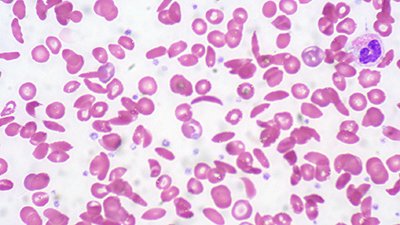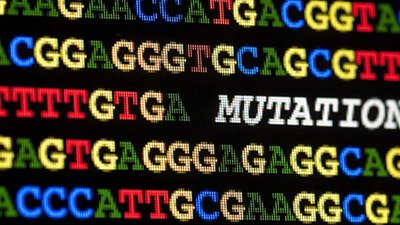Mutated Sense of Taste
Many meat-eating mammals have mutated sweet sense.
News Source
Mammals are generally able to detect sweet tastes due to a gene called Tas1r2, but cats were recently found to have a mutation in this gene and nonfunctional sweet taste receptors as a result. The Monell Chemical Sense Center team that discovered kitties lack a “sweet tooth” just published their survey of 12 other mammalian taste abilities. Diet seemed significantly related to loss of sweet sense-ability, with loss most notable among carnivores.
“Sweet taste was thought to be nearly a universal trait in animals,” says behavioral biologist Gary Beauchamp. “That evolution has independently led to its loss in so many different species was quite unexpected.” Seven carnivores in the group—the sea lion, fur seal, Pacific harbor seal, Asian otter, spotted hyena, fossa, and banded lingsang—had defective sweet receptor genes. The mutations disabling the gene, however, varied. Five of the animals tested—the aardwolf, Canadian otter, spectacled bear, raccoon, and red wolf—had intact sweet receptors. This group includes carnivores and omnivores. Additional testing of the two marine mammals, both of which typically swallow food whole, revealed nonfunctioning receptors for some other tastes as well.
“Our findings provide further evidence that what animals like to eat - and this includes humans - is dependent to a significant degree on their basic taste receptor biology.”
“Different animals live in different sensory worlds and this particularly applies to their worlds of food. Our findings provide further evidence that what animals like to eat - and this includes humans - is dependent to a significant degree on their basic taste receptor biology,” says Beauchamp. The team writes, “These data provide strong support for the view that loss of taste receptor function in mammals is widespread and directly related to feeding specializations.”1
The team did not, however, demonstrate any advantage to widespread loss of the functional “sweet tooth.” And clearly there is more to be learned about other roles for taste receptors as such receptors have been found in a variety of unexpected locations in mammals—the intestine, pancreas, nose, and lungs.
Plants are the main source of dietary sugars. The widespread presence of sweet receptor genes in carnivorous mammals may seem puzzling to evolutionists wondering why they evolved in the first place. However, from the Bible we know that all animals were originally vegetarians. Genesis 1:29–30 says, “And God said, ‘See, I have given you every herb that yields seed which is on the face of all the earth, and every tree whose fruit yields seed; to you it shall be for food. Also, to every beast of the earth, to every bird of the air, and to everything that creeps on the earth, in which there is life, I have given every green herb for food’; and it was so.” Therefore, it makes sense from a biblical perspective that God would have provided animals and humans with functioning sweet receptors. That the gene is not particularly varied is also no surprise, as the receptors would detect the same sorts of sugar molecules for all.
Following Adam’s sin, the entire creation suffered under a curse and at some point violence began. We cannot know for certain when animals became carnivorous, but over time many clearly did. The fossil record, most of which was preserved during the global Flood, shows evidence of such behavior. Creatures vary within their kinds, so the eventual loss of a sense not particularly useful to certain kinds of animals through mutations and other factors (such as natural selection or random selection of those genetic traits in small populations—like those after the global Flood) is not unexpected. This change can only be considered an example of “convergent evolution”2 in the sense that ordinary variation and loss of information through mutations occurring separately in various kinds of creatures produced similar results. There is certainly nothing in the study to support the idea of upward evolution of new kinds of creatures from common ancestors. [Ed note: wording clarified March 19, 2012.]
For More Information: Get Answers
Remember, if you see a news story that might merit some attention, let us know about it! (Note: if the story originates from the Associated Press, FOX News, MSNBC, the New York Times, or another major national media outlet, we will most likely have already heard about it.) And thanks to all of our readers who have submitted great news tips to us. If you didn’t catch all the latest News to Know, why not take a look to see what you’ve missed?
(Please note that links will take you directly to the source. Answers in Genesis is not responsible for content on the websites to which we refer. For more information, please see our Privacy Policy.)
Footnotes
Recommended Resources

Answers in Genesis is an apologetics ministry, dedicated to helping Christians defend their faith and proclaim the good news of Jesus Christ.
- Customer Service 800.778.3390
- © 2024 Answers in Genesis








